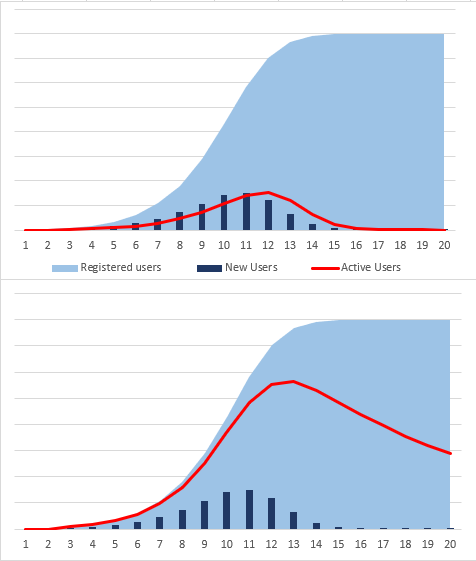- ARPDAUPosted 13 years ago
- What’s an impressive conversion rate? And other stats updatesPosted 13 years ago
- Your quick guide to metricsPosted 13 years ago
Sell emotion, not content: Free-to-play Design Rule 13
 Selling content is what content creators do, right?
Selling content is what content creators do, right?
Not any more.
Now that digital distribution has made it incredibly cheap to share content on the web, consumers are increasingly refusing to pay for it. (Recent research suggests, for example, that 49% of people think it appropriate to download music for free and 40% can’t remember when they last bought a CD).
This means that a developer making a game has to change the way they view their business. Instead of spending $2 million building a virtual world and charging people for access to it, they have to spend $2 million building a virtual world, give it away to build an audience, and find other things to sell in it.
Those things are unlikely to be expensive to make. They are most likely to be an entry in a database or a few days of art/programmer time. They might be selling:
- Self expression (costumes, avatars, animations)
- Progress (trading time for money, instant gratification)
- Power (better weapons, better equipment)
- Status (the ability to show off to others, whether aesthetically or within game mechanics)
- Relationships (gifts, co-operative benefits)
- And much more
These aren’t mutually exclusive elements. The point is that no gamer thinks about how much something cost to build when considering whether to buy it or how much to pay. They are considering how much it is worth to them. Whether they will enjoy it. How it will make them feel.
In the world of free-to-play, you are competing with tens of thousands of games that are totally free to play. In that world, you aren’t charging for content; you are charging for emotion.
The next post will look at game development itself, and how to survive in a challenging environment.













